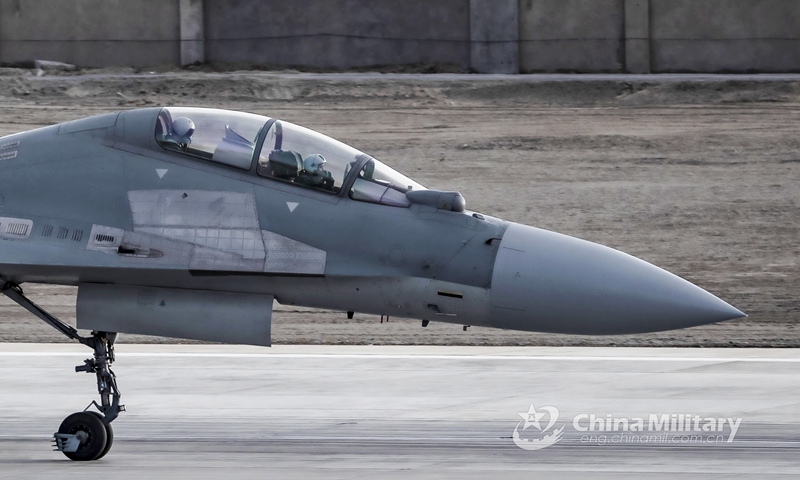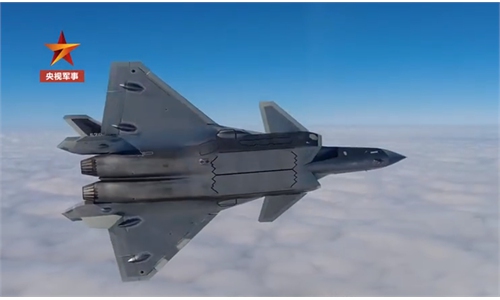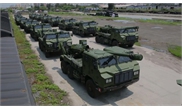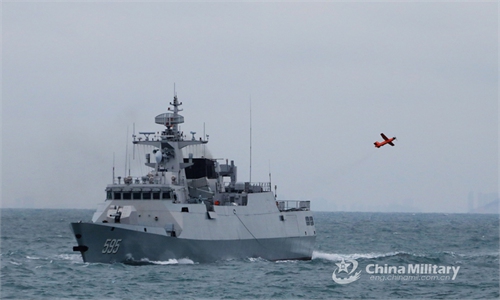
A J-16 fighter jet attached to an aviation brigade of the air force under the PLA Western Theater Command gets ready to take off from the runway during an aerial combat training exercise under complex electromagnetic conditions in early April, 2021.(Photo: eng.chinamil.com.cn)
The Chinese People's Liberation Army (PLA) Air Force has started to deploy artificial intelligence (AI) as simulated opponents in pilots' aerial combat training so pilots can not only hone their decision-making and combat skills against fast-calculating computers, but the AIs can also learn from each engagement, and have already bested their human opponents on many occasions, according to a new report.
In addition to training pilots efficiently, AIs are expected to be an integral part of China's future warplanes that would assist pilots with their combat decisions, observers said on Monday.
An aviation brigade affiliated with the PLA Central Theater Command Air Force held a training simulation in early summer, in which Fang Guoyu, a group leader of the brigade and the champion in a previous confrontational combat exercise, was shot down in a mock aerial battle against an AI aircraft in a simulator, the PLA Daily reported on Saturday.
This is not the first time the renowned Fang was shot down by the AI, and Fang is not the only ace the AI has defeated over the past years, the report said.
"The AI has shown adept flight control skills and errorless tactical decisions, making it a valuable opponent to hone our capabilities," Du Jianfeng, commander of the brigade, was quoted as saying. The brigade has been integrating simulated and AI-assisted training in daily training in recent years, he said.
Simulated training can boost training efficiency, save costs and lower flight risks, and with the rapid development of technology, it has become a common goal for major military powers around the world to take advantage of training simulations, the PLA Daily said.
The AI technology-based autonomic aerial combat simulator was jointly developed by the brigade and research institutes, and has become a solid support in boosting pilots' combat capabilities, Fang said.
The AI is also learning from the pilots as it gathers data from each training session. "At first, it was not difficult to win against the AI. But by studying data, each engagement became a chance for it to improve," Fang said, noting that in a combat session, Fang used a hard-thought tactics against the AI and finally beat it by a small margin, but in the next session, the AI used the same tactics against Fang to defeat him.
This forces pilots to develop more and more innovative tactics and make breakthroughs to win these simulations, the PLA Daily said.
AIs can not only help pilots improve in training, but also be integrated into warplanes and assist pilots in combat, for example, by calculating the best tactical options for pilots to choose by taking the whole battlefield situation into consideration, at a much better efficiency than a human brain under very complicated situations, a Chinese military expert told the Global Times on Monday, requesting anonymity.
This is also the concept raised by Yang Wei, chief designer of China's J-20 stealth fighter jet. Yang said in a paper in 2020 that the next generation fighter jet could feature AI, which is a key field to help pilots process vast information and make decisions in complicated battlefield environments.




